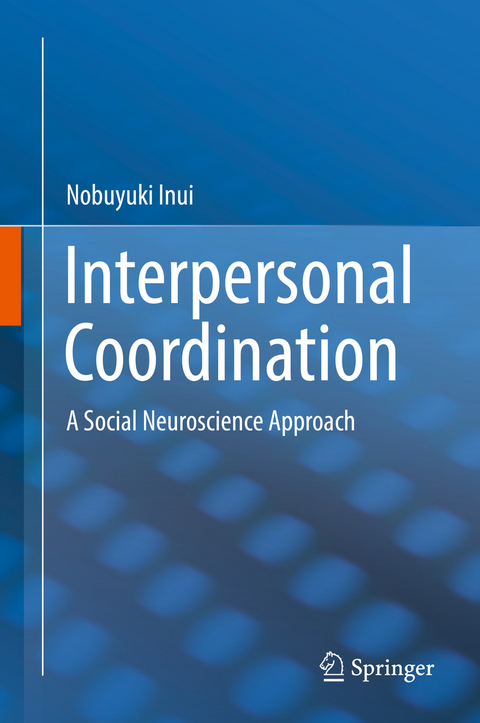
Interpersonal Coordination
Springer Verlag, Singapore
978-981-13-1764-4 (ISBN)
Nobuyuki Inui, Ph.D.Laboratory of Human Motor Control, Naruto University of Education, Japan
1 Introduction.- References.- 2The background of the study on interpersonal coordination.- 2.1The social brain.- 2.2The motor cortex and its relation to social behavior.- 2.3 The social function of the mirror neuron system.- 2.4Imitation, mimicry, and its relation to social behavior.- 2.5Joint perception.- 2.6Observational motor learning.- 2.7The effect of action expertise on shared representation.- 2.8The effect of motor expertise on observational learning in sports.- 2.9The effect of shared representation on team sports.- 2.10 The effect of shared representation on musical ensemble performance.- References.- 3 An overview of the study on interpersonal coordination.- 3.1 Unintentional interpersonal entrainment.- 3.2 Intentional interpersonal coordination.- 3.3 Development of interpersonal coordination.- References.- 4 Complementary and synchronous force production in joint action.- 4.1 Two heads are better than one.- 4.2 Is there social loafing in joint action that consists of four people?.- 4.3 A leader-follower relationship in joint action.- 4.4 Effects of speech on joint action.- 4.5 Load perturbation facilitates interpersonal error compensation during joint action.- References.- 5 Is there bidirectional transfer between joint and solo actions?.- References.- 6 Motor control hierarchy in joint action that involves bimanual action.- References.- 7 Conclusion.- References.- Acknowledgement.
| Erscheinungsdatum | 04.10.2018 |
|---|---|
| Zusatzinfo | 2 Illustrations, color; 66 Illustrations, black and white; XII, 244 p. 68 illus., 2 illus. in color. |
| Verlagsort | Singapore |
| Sprache | englisch |
| Maße | 155 x 235 mm |
| Themenwelt | Geisteswissenschaften ► Philosophie ► Erkenntnistheorie / Wissenschaftstheorie |
| Geisteswissenschaften ► Psychologie ► Biopsychologie / Neurowissenschaften | |
| Studium ► 1. Studienabschnitt (Vorklinik) ► Physiologie | |
| ISBN-10 | 981-13-1764-X / 981131764X |
| ISBN-13 | 978-981-13-1764-4 / 9789811317644 |
| Zustand | Neuware |
| Haben Sie eine Frage zum Produkt? |
aus dem Bereich


